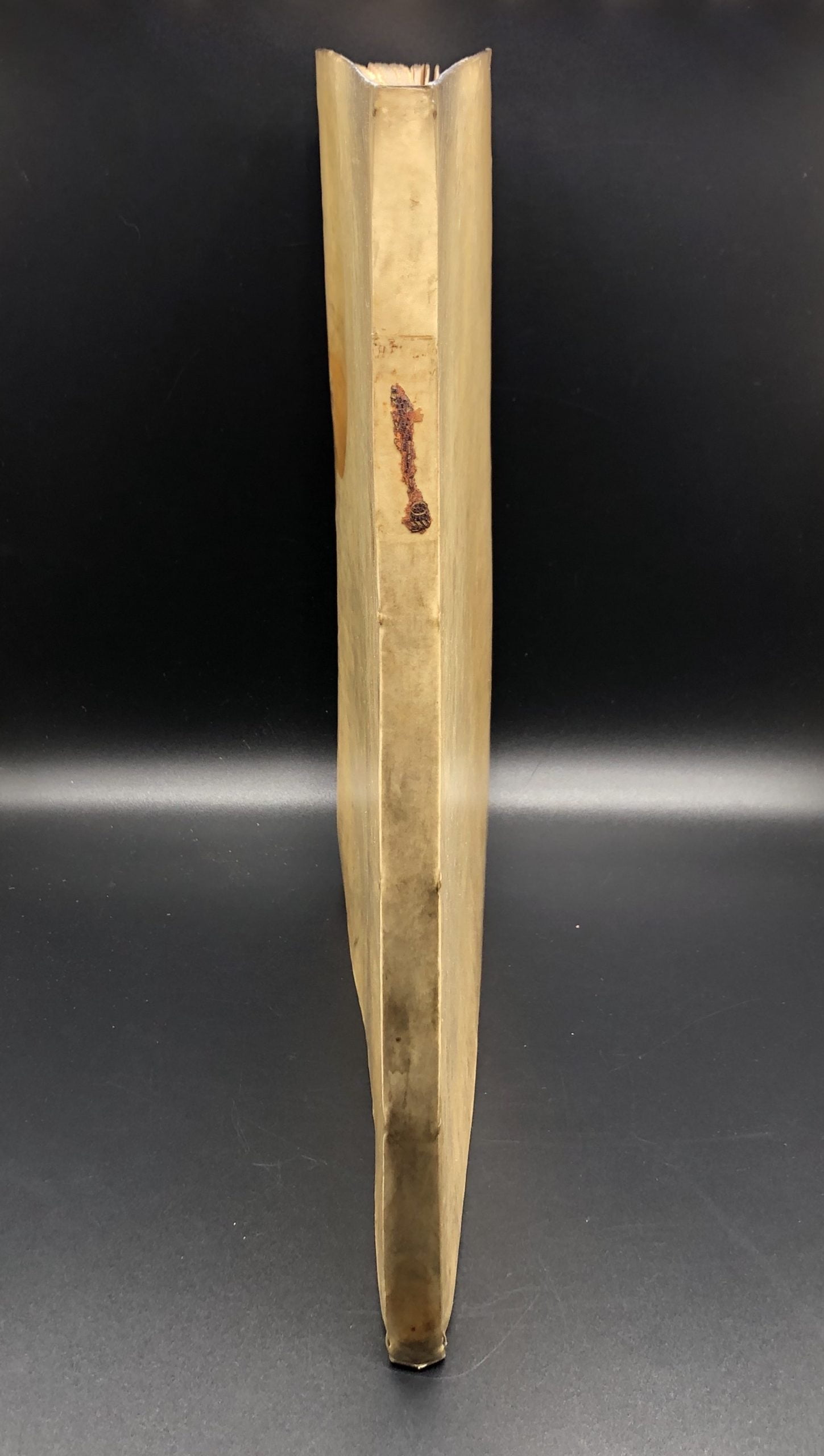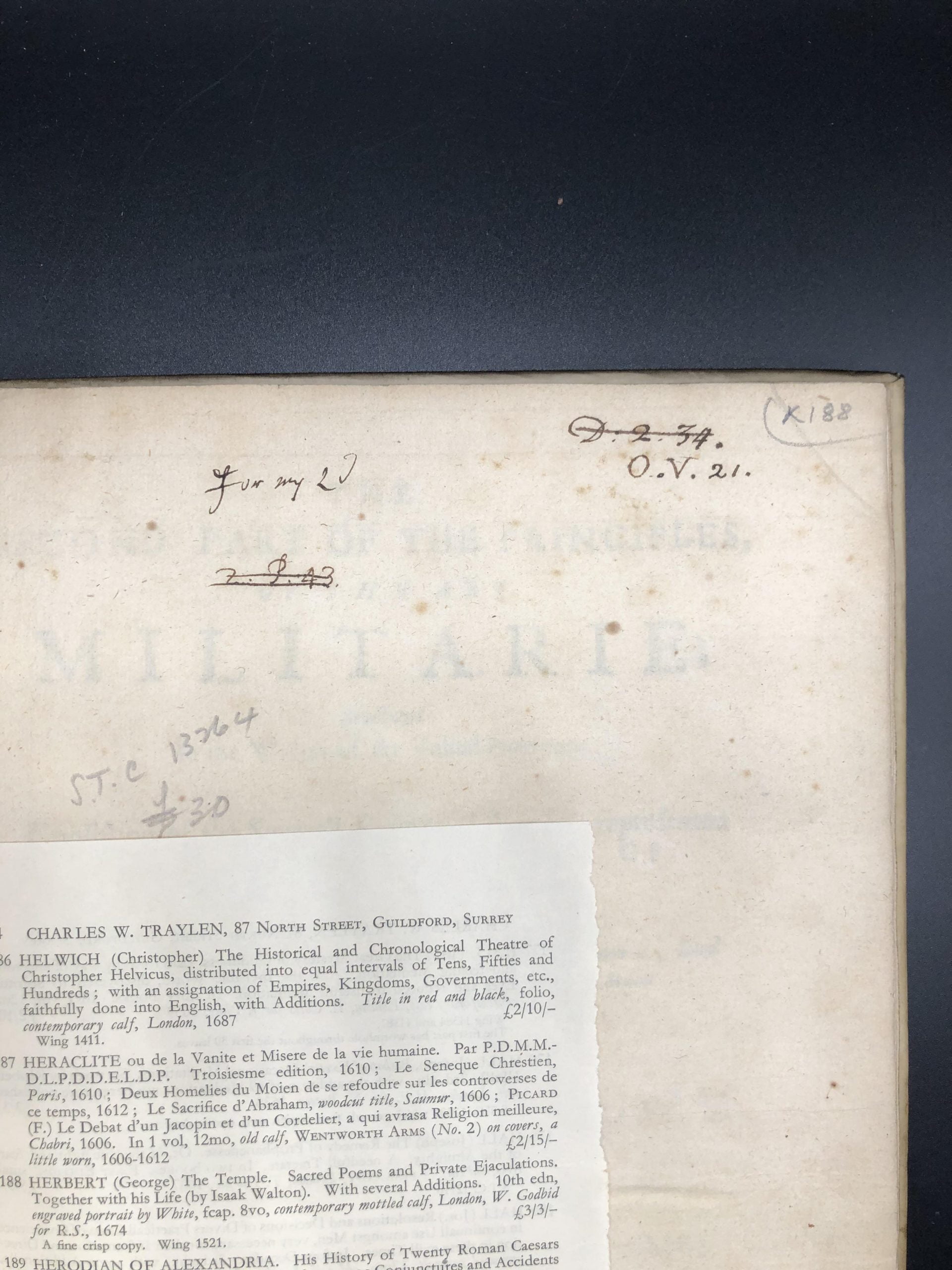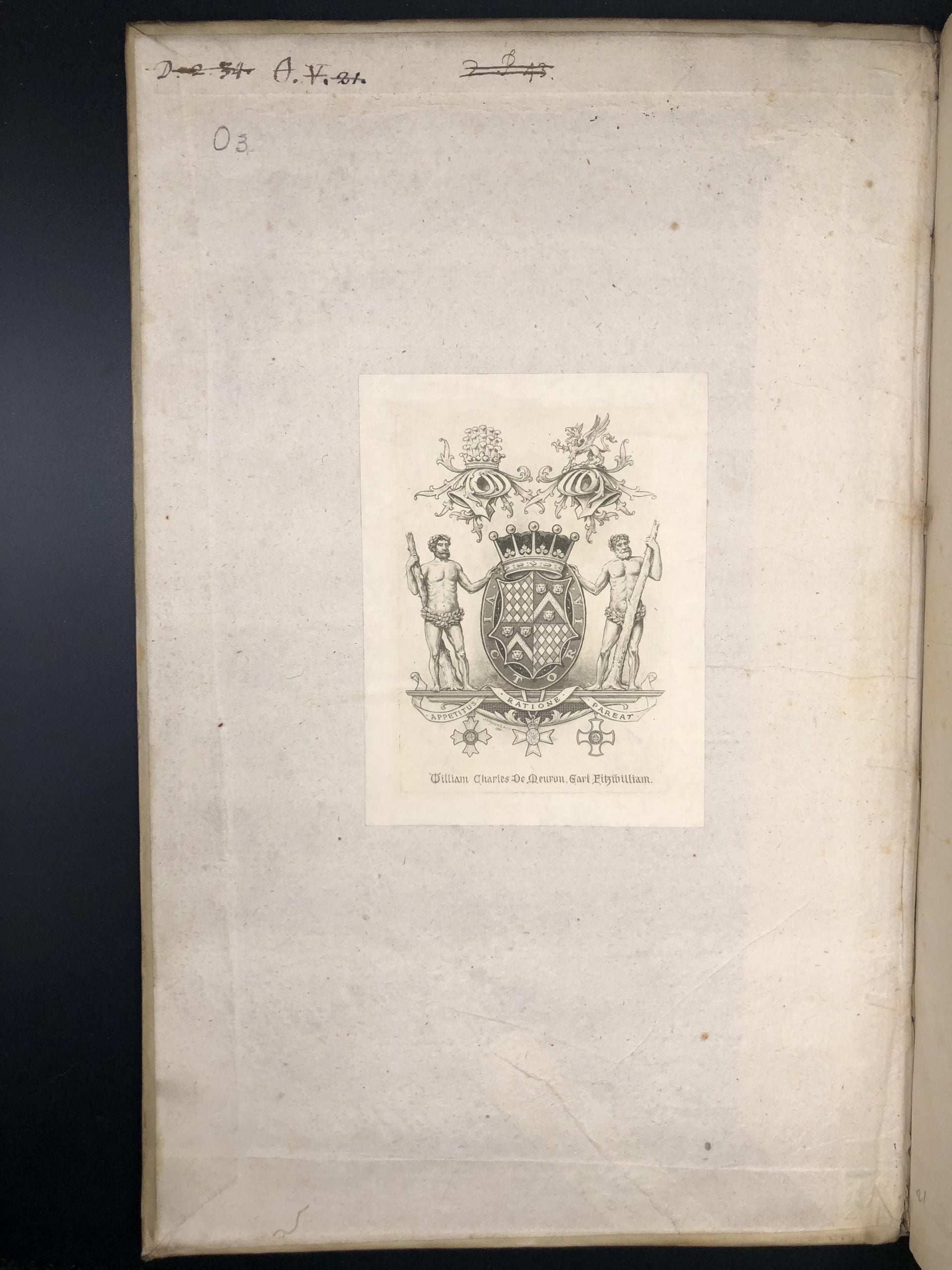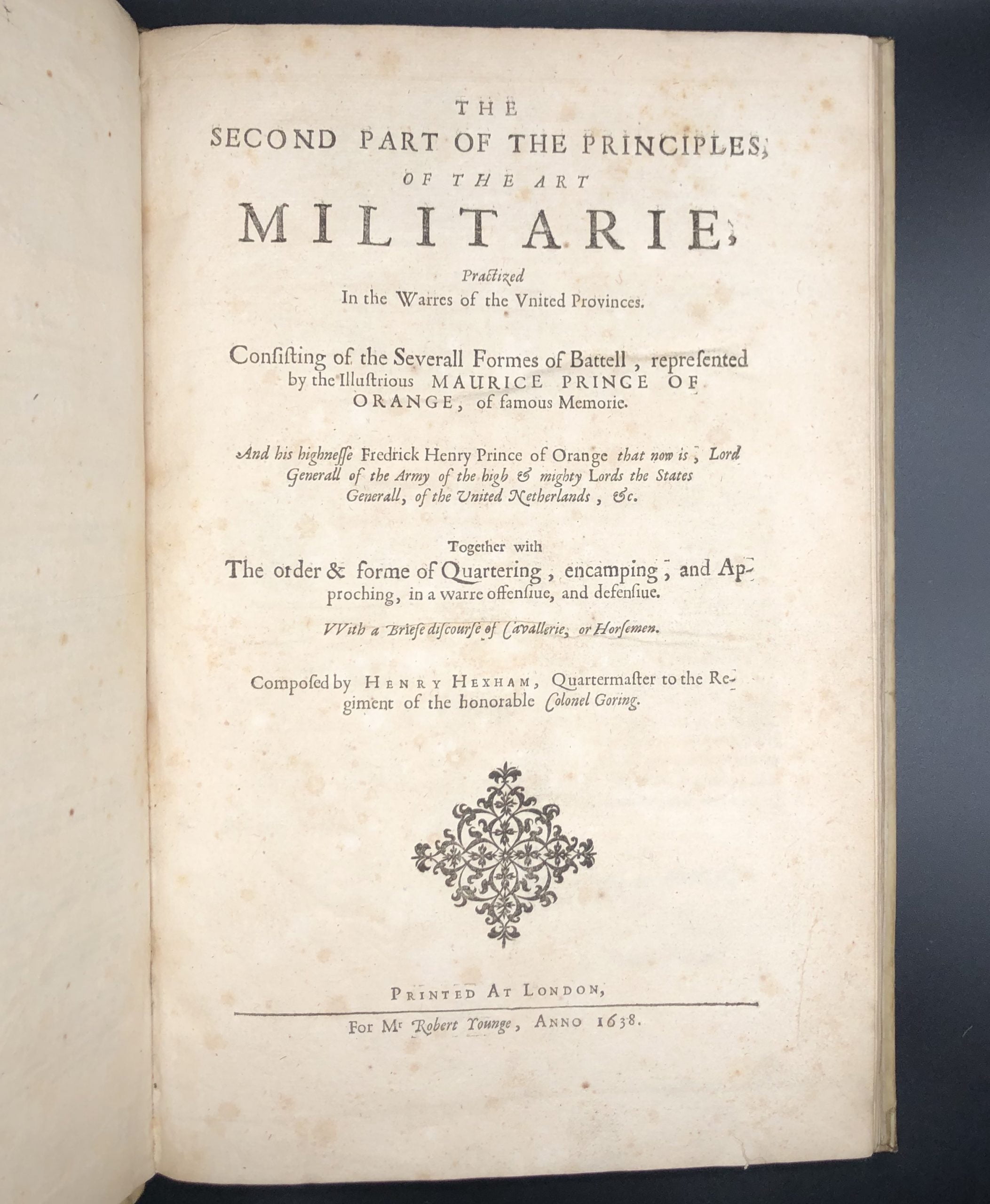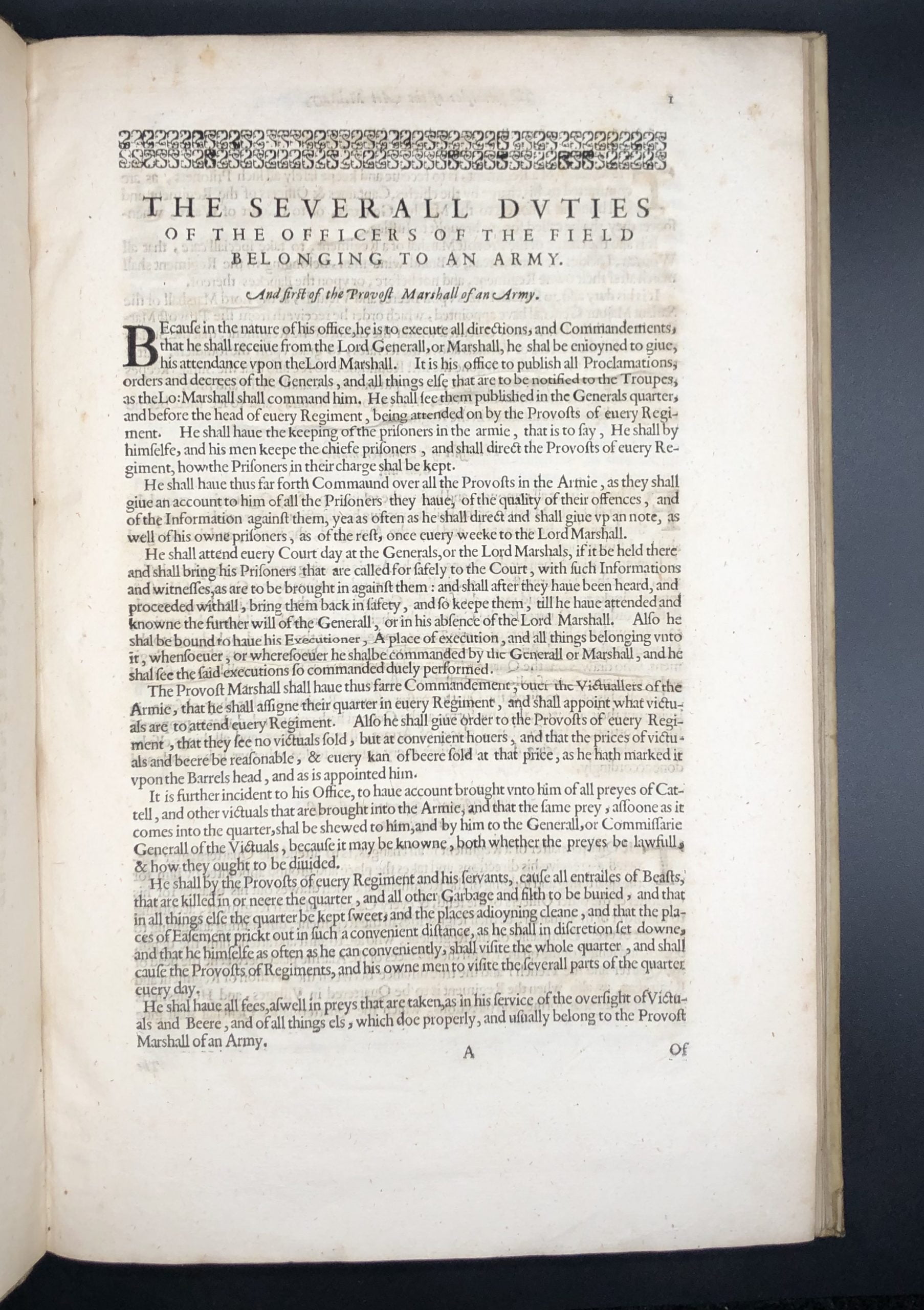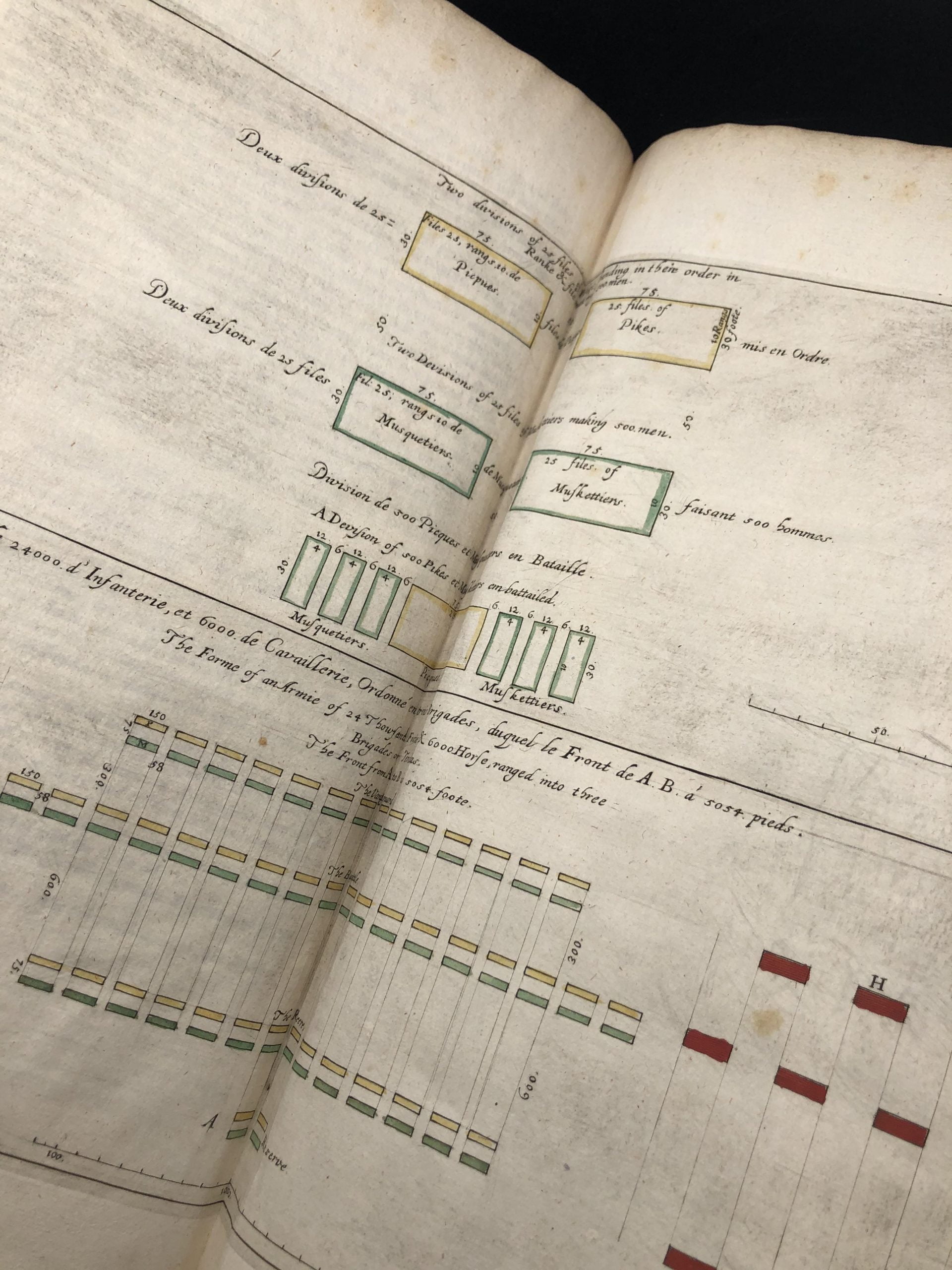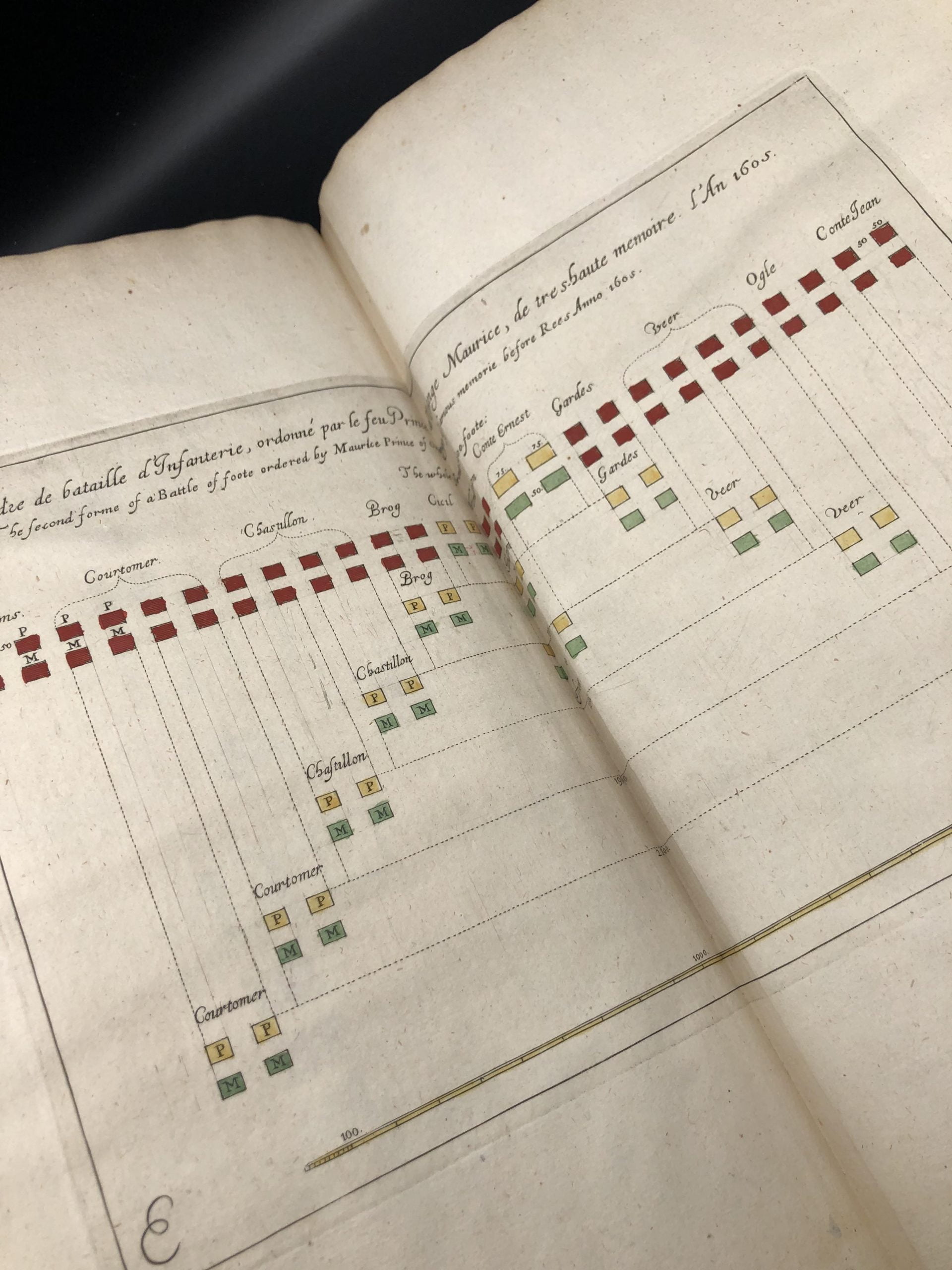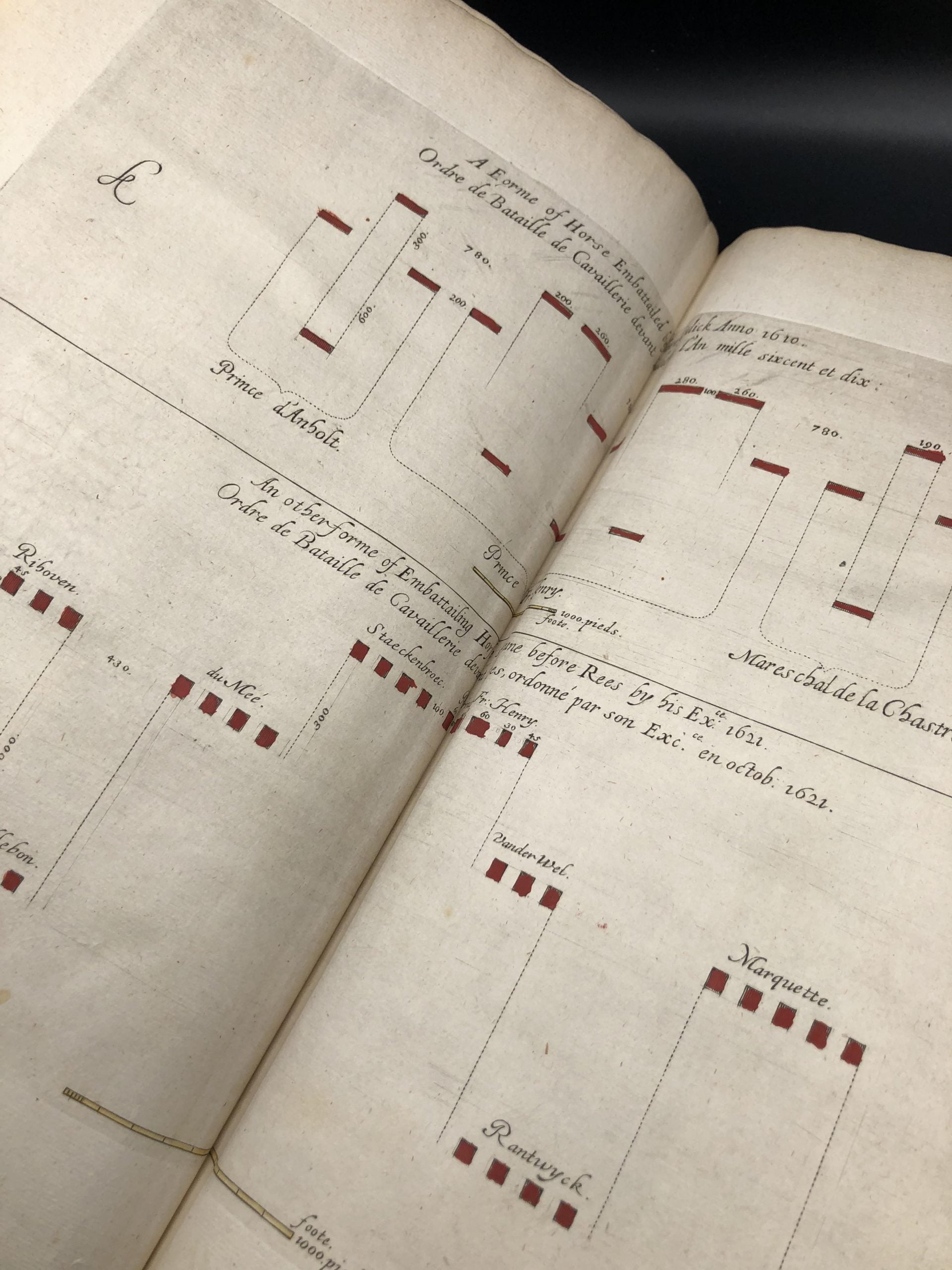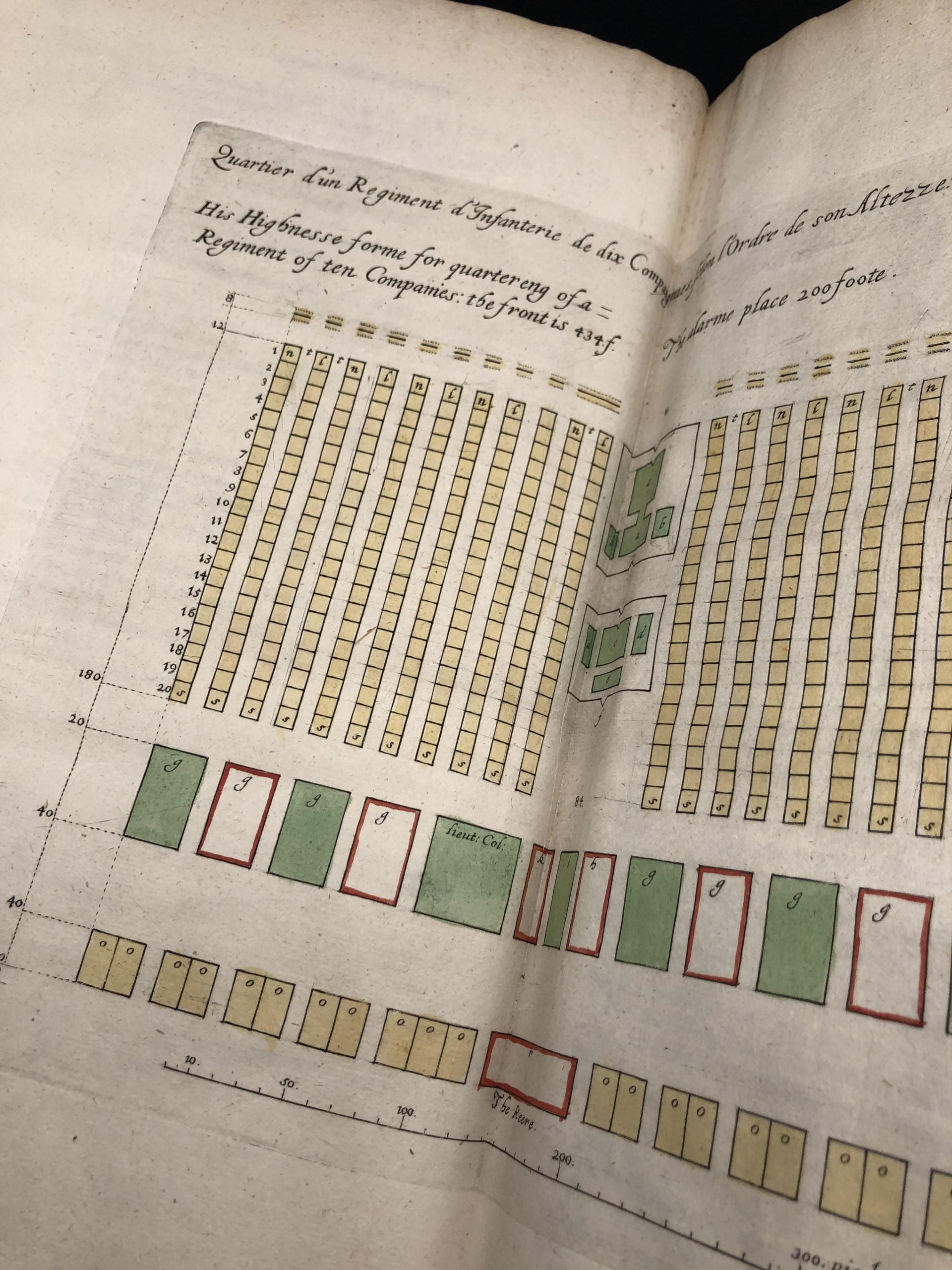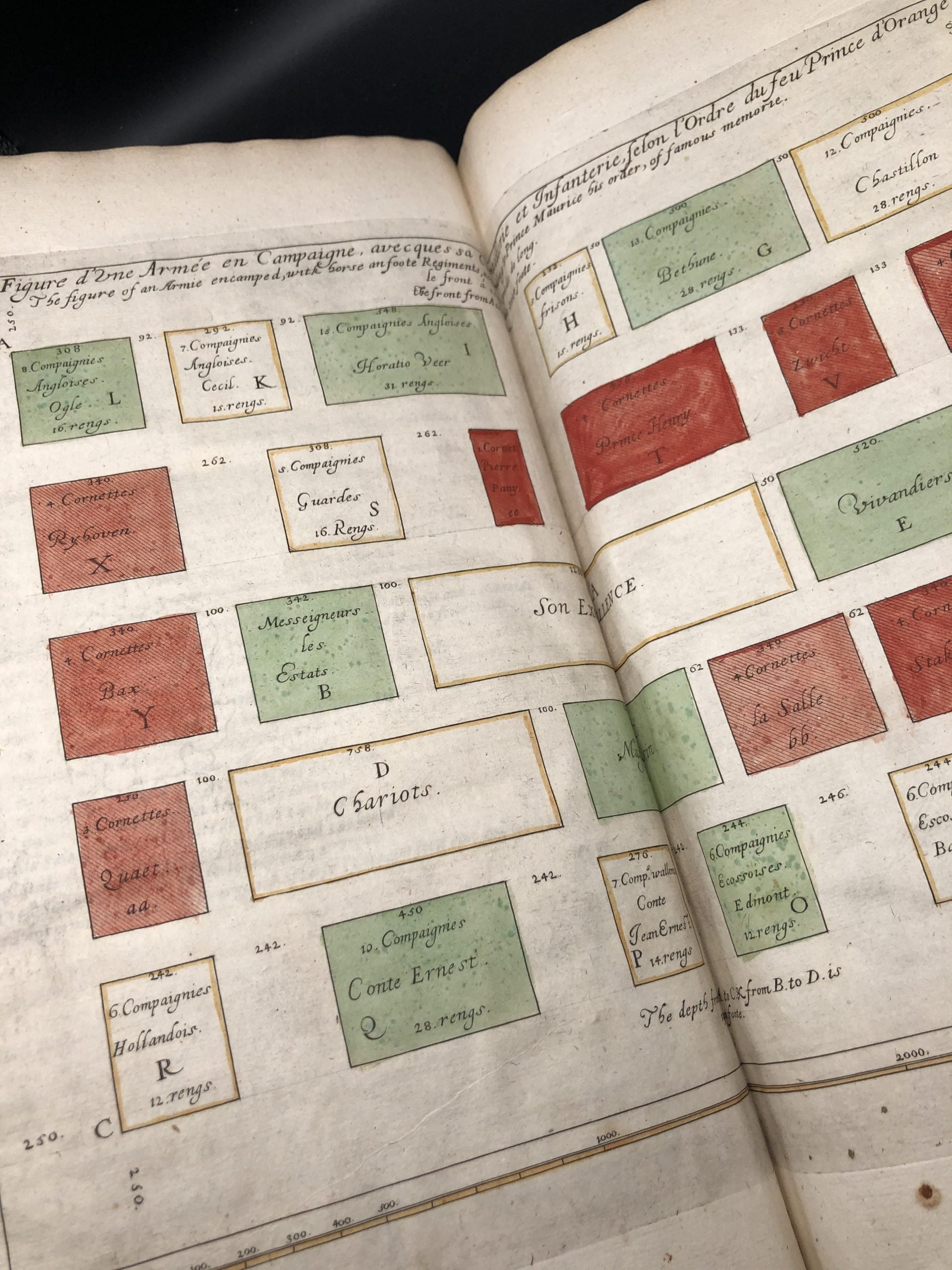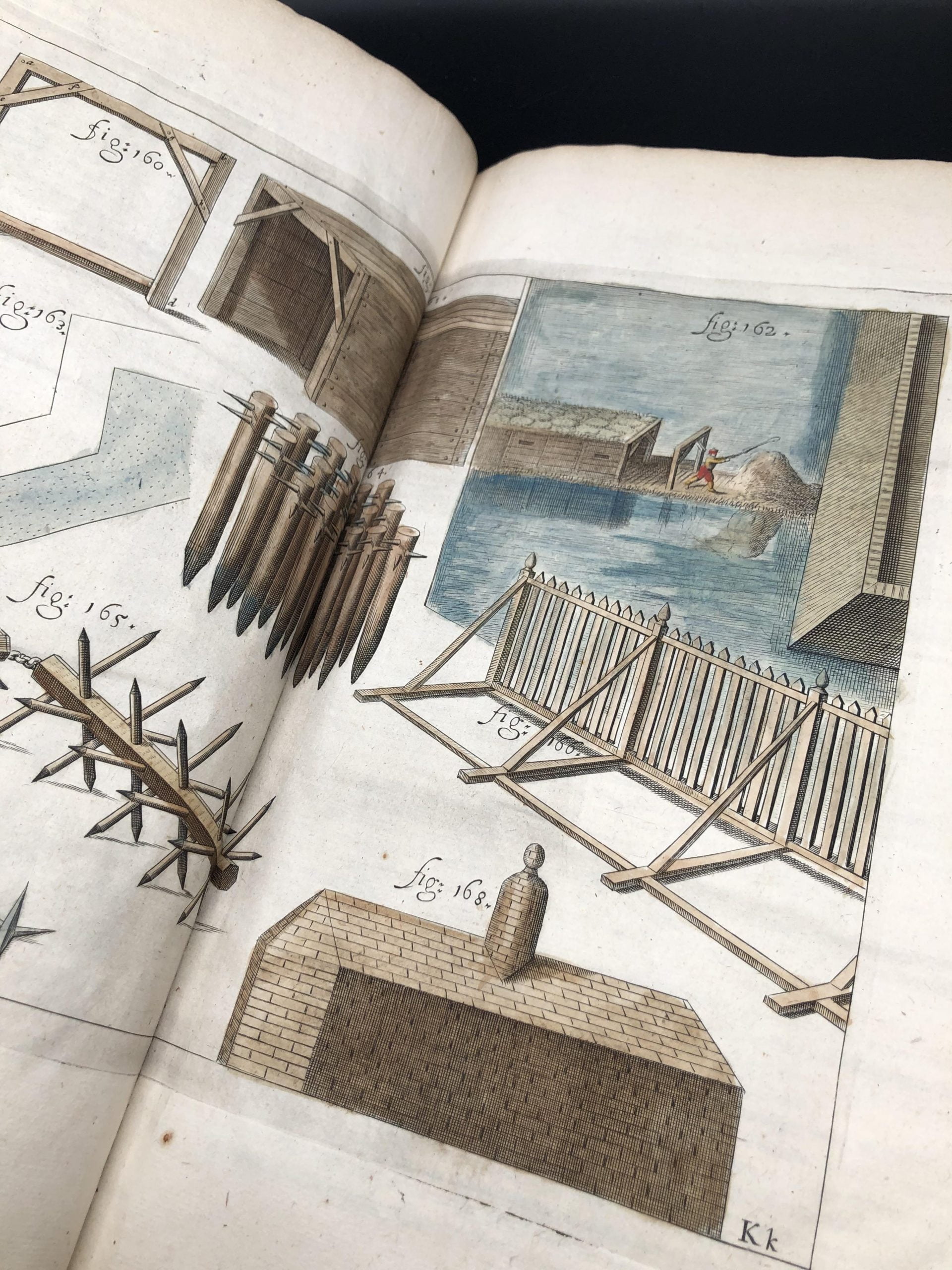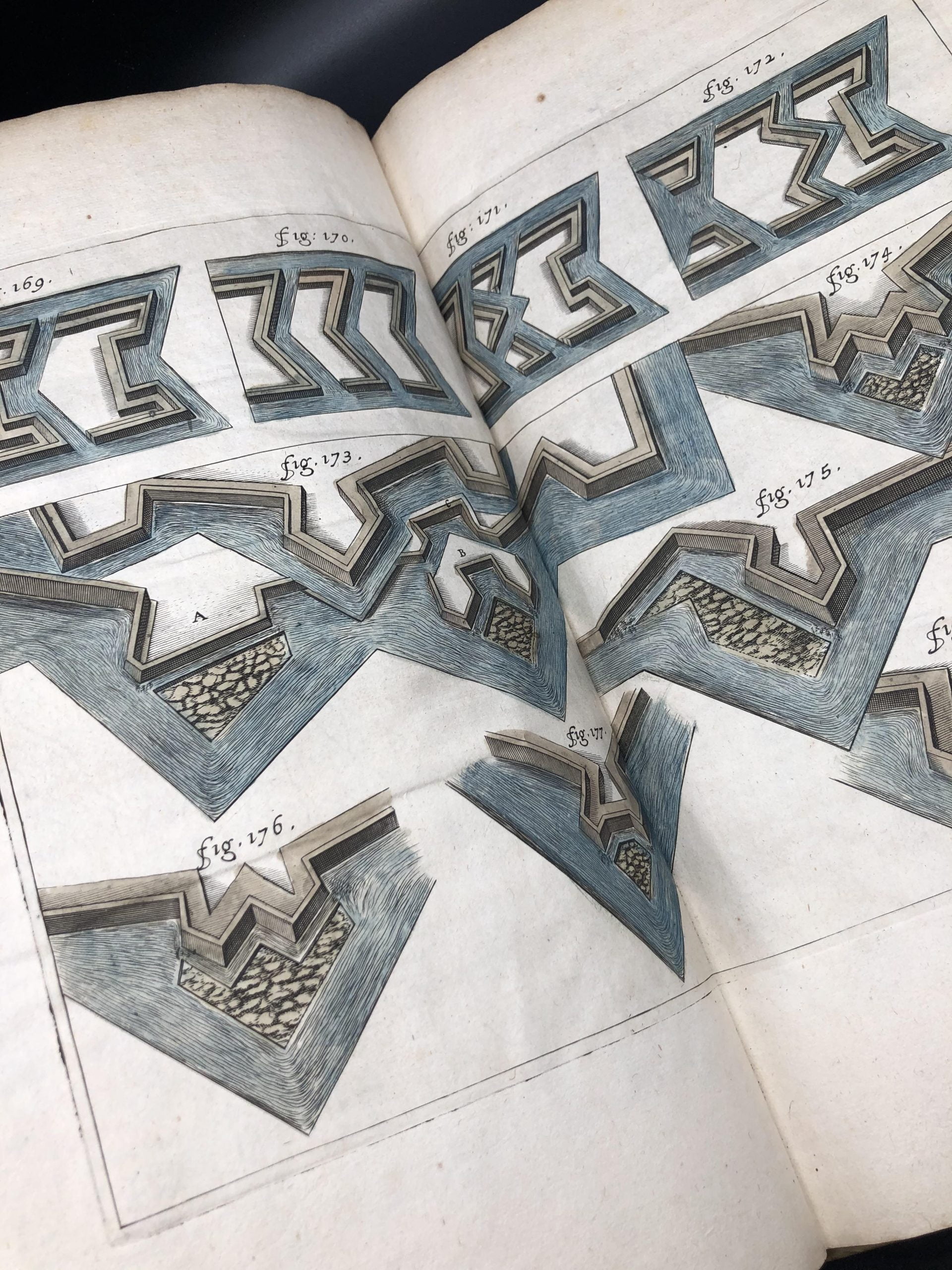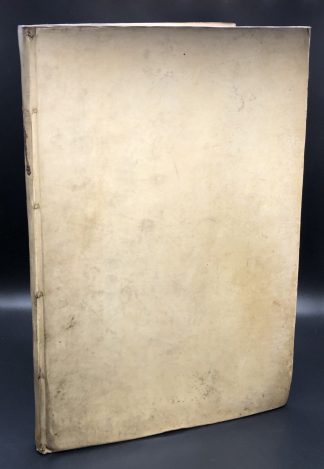HEXHAM, Henry
ELEGANTLY COLOURED
The second part of The principles, of the art militarie, practized in the warres of the Vnited Provinces.
London, [i.e. Delft : By Jan Pietersz. Waelpot] for Mr Robert Younge, 1638£29,500.00
FIRST EDITION. folio. [iv], 18, 40. 19 engraved plates (17 double-page) all with fine contemporary outlining and colouring, some signed by Hondius. “A reissue, with cancel quire pi, of the edition with imprint: Printed at Delf, by Ian Pieters VValpote”. ESTC. Roman letter, some Italic. Woodcut ornament on the t-p, woodcut initials and headpieces, typographical ornaments, engraved armorial bookplate of William Charles de Meuron, Earl Fitzwilliam, (1872-1943), various early shelf marks of pastedown and fly. . Light age yellowing, very minor spotting, t-p fractionally thumbed in lower corner, one plate with small closed tear in lower blank margin. A fine copy, crisp and clean with good margins, the plates with good impression in contemporary hand colouring, in contemporary vellum over thin boards, remains of label, small stain on lower cover.
Extremely rare first edition of this important military work, printed in Holland, one of two variants; this with the cancel title in English. This copy has the plates in fine contemporary hand colouring. Both editions are extremely rare. This variant is recorded in ESTC in three copies only, two at the Huntington Library and one at Harvard. The variant with the Dutch title page in recorded a unique copy, also at the Huntington. There is no copy of either in UK libraries. The work was reprinted in 1642 in England.
“Hexham’s long military career began when he was fifteen or sixteen. He was born in the Netherlands to English parents in circa 1585 and first served with Vere at Ostend and remained with him until his departure for England in 1604. … His three instruction manuals … were a tour de force of English military literature and a veritable catalogue of the Dutch contributions to the transformation of warfare in the late sixteenth and early seventeenth centuries. .. Hexham was one of the most prolific soldier-authors of the early Stuart period and his contributions to English military literature are quite significant. His ties to Horace Vere and to many of the soldiers in the Vere circle is one more instance of the strong conections between Englands military writers and the countries leading military figures.” David R. Lawrence ‘The Complete Soldier: Military Books and Military Culture in Early Stuart England.
“A number of British writers were influenced by this ‘Dutch-drill’. Most notably John Bingham in his work on The Tactiks of Aelian (1616), John Cruso’s Military Instructions for the Cavallrie (1632) and The Art of War, or Militarie Discourses (1639) and Henry Hexham’s Principles of the Art Militarie …Hexham was Quartermaster to Colonel George Goring in the Dutch Wars (he became a royalist general in the civil war) and his work is a recognition of Maurice’s achievements. It outlines, again in great detail, the structure of an army and roles of the officers and key non-commissioned officers; provides extremely detailed accounts of musket and pike drills with excellent diagrams; includes details and rates of pay as well as the ransoms to be paid for officers and finally a section on military law and the punishments. The second section concentrates on the various battles fought during the Thirty Years’ War, but provides little explanation of how those formations were fought. A final section covers the artillery and engineers. While Hexham does not consider combined operations per se, he includes a pivotal section on the inclusion of cavalry squadrons to support the first line infantry in which he describes placing ‘Battallions of horse, interlaced, and placed betwixt the intervals, and distances of the Foote, as the ground necessity may require. For, if an Enemies Horse should be ranged betweene his Battallions of foote, it is needed then, that the other side should observe the same form likewise, and have horse to encounter horse, lest they should breake in upon the foote divisions’. Nicolas Lipscombe, ‘Combined Arms Tactics in the English Civil War’.
ESTC S1197323; STC 13264.4. Not in Cockle (1642 edn. only).In stock



